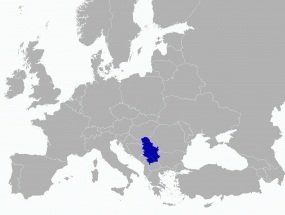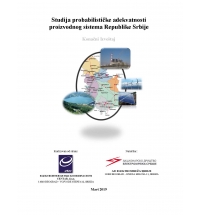Consultancy service for Probabilistic System Adequacy Assessment
client: Elektromreza Srbije AD (Serbia)
type: Analysis
finishing date: March 2019
team: Dragana Orlic - Project Manager, D. Vlaisavljevic, B. Lekovic, I. Mihajlovic-Vlaisavljevic
This analysis aims at determining the level of the risk of achieving a situation in which total consumption in Serbia is not met. The level of this risk is determined on the basis of the number of hours during the year in which part of the consumption is not satisfied, and the system is considered adequate if the number of these hours is smaller than the predefined marginal number.
Generation adequacy analysis is carried out with respect to all market restrictions on the operation of the power system and considering a large number of possible situations (more than 1000). They are characterized by different levels of production from renewable sources, production of hydro and thermal power plants and different levels of consumption as a result of different climatic conditions (wind speed, sunshine or temperature), hydrology and thermal unit failure. Main results of these analyzes are indicators of level of risk of satisfying the total consumption of the system, expressed through probabilistic indicators of generation adequacy:
- LOLE (Loss Of Load Expectation) (h / yr) - number of hours in which consumption is not met
- LOLP (Loss Of Load Probability) (%) - probability of a situation where the consumption is not satisfied
- ENS (Energy Not Supplied) (MWh) - total energy consumption that is not met
In addition to these indicators, as a result of these analyzes, generation (by technologies, by power plants, by blocks), production costs, cross-border exchange, wholesale prices, CO2 emissions, etc. are also obtained.
In the analyses, the ENTSO-E methodology for analyzing the generation adequacy based on the probabilistic approach and Monte Carlo simulations is applied. It means the application of the software tool (Antares) that is formulated on the basis of probabilistic hourly simulation of the operation of the electric power system respecting the following:
- Probabilistic simulation (using the Monte Carlo method) that includes different combinations of wind power plants, solar power plants, hydroelectric power plants, as well as various changes in consumption depending on atmospheric conditions (variability of wind, solar radiation, hydrological conditions and temperatures), as well as different levels the unavailability of thermal units due to their failure or maintenance,
- Optimization of unit commitment and "optimal hourly dispatching" with the goal of minimizing total system operating costs on an annual basis,
- Characteristics and limitations in the transmission network (NTC or GTC restrictions)
Type of services provided:
- Data collection
- Defining all elements of the methodology and Scenarios
- Model development in the Antares software package
- Calculations, analysis of results
- Preparation of the Draft Report
- Presentation of the Draft Report
- Delivery of the model and the final report


